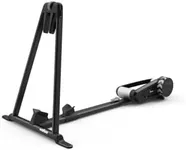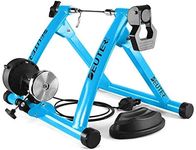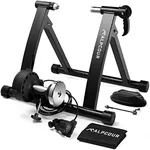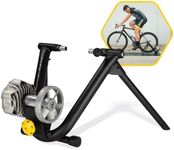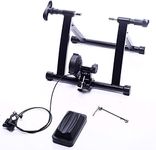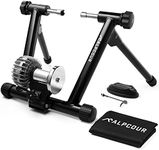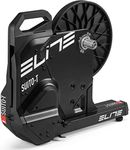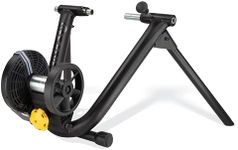Buying Guide for the Best Bicycle Trainers
Choosing the right bicycle trainer can significantly enhance your indoor cycling experience. Bicycle trainers allow you to convert your regular bike into a stationary one, making it possible to train indoors regardless of the weather. When selecting a bicycle trainer, it's important to consider various specifications to ensure it meets your training needs and preferences. Here are some key specs to consider and how to navigate them.Type of TrainerThere are several types of bicycle trainers, including wheel-on, direct-drive, and rollers. Wheel-on trainers are easy to set up and are generally more affordable, but they can be less stable and noisier. Direct-drive trainers replace your rear wheel and offer a more stable and quieter ride, with better power measurement accuracy. Rollers require more balance and skill but provide a more natural riding feel. Choose a type based on your skill level, space, and the kind of training you plan to do.
Resistance MechanismThe resistance mechanism determines how the trainer simulates different levels of difficulty. There are fluid, magnetic, and electronic resistance trainers. Fluid trainers offer a smooth and progressive resistance that increases with speed, making them feel more like outdoor riding. Magnetic trainers provide consistent resistance and are usually quieter but may not feel as natural. Electronic trainers can be controlled via apps and offer a wide range of resistance levels and training programs. Consider what type of resistance will best match your training goals and preferences.
Noise LevelNoise level is an important factor, especially if you live in an apartment or plan to train while others are at home. Fluid trainers tend to be quieter than magnetic ones, and direct-drive trainers are generally the quietest. If noise is a concern, look for trainers specifically designed to operate quietly. Your choice should depend on your living situation and how much noise you can tolerate during your workouts.
CompatibilityEnsure that the trainer you choose is compatible with your bike. Check the trainer's specifications for wheel size and axle compatibility. Some trainers are designed to work with a wide range of bikes, while others may require adapters. If you have a specific bike model, make sure the trainer can accommodate it without requiring significant modifications. This will save you time and ensure a smooth setup process.
Connectivity and Smart FeaturesMany modern trainers come with smart features that allow you to connect to training apps and devices. These features can enhance your training experience by providing real-time data, virtual rides, and structured workouts. Look for trainers with Bluetooth or ANT+ connectivity if you plan to use apps like Zwift or TrainerRoad. If you enjoy interactive training and tracking your progress, smart features can be a valuable addition.
Portability and StorageConsider how easy it is to set up, move, and store the trainer. Some trainers are foldable and lightweight, making them easy to transport and store when not in use. Others may be bulkier and more challenging to move. If you have limited space or plan to take your trainer to different locations, look for a model that is easy to handle and store.
Stability and Build QualityA stable and well-built trainer will provide a safer and more enjoyable riding experience. Look for trainers with a wide base and sturdy construction to ensure they can handle intense workouts without wobbling. High-quality materials and craftsmanship will also contribute to the trainer's durability and longevity. If you plan to do high-intensity training, prioritize stability and build quality to ensure your safety and comfort.



